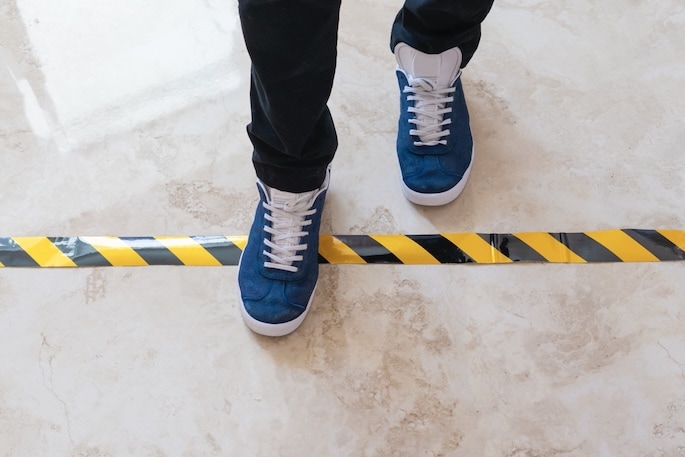Natural disasters and winter storms can cause significant disruptions to businesses. From ensuring employee safety to maintaining operations, having a robust emergency preparedness and response plan is essential. By proactively preparing for these events, businesses can reduce risks, safeguard employees, and minimize downtime.
This guide focuses on developing an emergency response plan with actionable strategies for handling weather-related emergencies, from communication protocols to assembling resource kits, ensuring your team can face natural disasters and winter storms confidently.
Why Emergency Preparedness Matters
Natural disasters, severe winter storms, and other unexpected emergencies can severely impact businesses. A comprehensive emergency preparedness plan helps mitigate these challenges by addressing key risks:
Employee Safety Risks
Hazardous conditions such as snow, ice, and freezing temperatures can jeopardize the well-being of your workforce. Without a solid emergency response strategy, accidents or injuries may occur.
Operational Downtime
Natural disasters and winter storms can result in power outages, damaged infrastructure, and disrupted supply chains, halting productivity and affecting revenue.
Increased Costs
Businesses unprepared for emergencies face significant unplanned expenses, such as repairs, alternative work arrangements, and medical costs. A strong emergency response plan minimizes these financial risks.
Steps to Develop an Emergency Preparedness Plan
1. Assess Potential Risks
Understanding the natural disasters and weather hazards most likely to affect your business is the first step in creating an effective emergency preparedness and response plan.
- Are you in a region prone to hurricanes, blizzards, or floods?
- How vulnerable is your infrastructure to weather-related damage?
A thorough risk assessment allows you to prioritize threats and tailor your emergency response plan accordingly.
2. Establish Clear Communication Protocols
Communication is critical in emergency preparedness and response. Ensure your plan includes:
- Updated contact lists for employees, local authorities, and key service providers.
- Notification systems like email or text alerts to disseminate real-time updates.
- Designated personnel for delivering updates and coordinating actions during a crisis.
Testing communication systems ensures they remain reliable during real emergencies, reinforcing your overall emergency preparedness plan.
3. Assemble Emergency Resource Kits
A well-stocked resource kit is a fundamental element of emergency preparedness and response. Include:
- First aid supplies, including bandages and over-the-counter medications.
- Non-perishable food and bottled water to sustain employees for at least 72 hours.
- Emergency tools like flashlights, extra batteries, duct tape, and multi-tools.
- Winter-specific items, such as blankets, hand warmers, and ice melt, to handle severe winter storms.
- Battery-powered radios and satellite phones for reliable communication during power outages.
Regularly inspect and update these kits to maintain readiness.
4. Create an Evacuation Plan for Emergency preparedness
Evacuation procedures are vital for severe weather scenarios. An effective plan includes:
- Clearly marked primary and secondary evacuation routes.
- Safe meeting points where employees can gather after evacuations.
- Inclusive accommodations for individuals with disabilities or other functional needs.
- Routine drills to ensure all employees are familiar with the process.
Incorporating these steps into your emergency preparedness plan ensures a seamless evacuation when necessary.
5. Train Employees on Emergency Protocols
Employee training builds confidence and ensures a coordinated emergency response. Training topics should cover:
- Recognizing weather alerts and early warning signs of natural disasters.
- Proper use of emergency kits and tools.
- Evacuation procedures and shelter-in-place instructions.
- Incident reporting during emergencies.
Integrating emergency training into onboarding and conducting annual refreshers keeps your team prepared.
6. Collaborate with Local Authorities
Partnering with local emergency services enhances your business’s emergency preparedness and response capabilities. Collaborate by:
- Inviting local officials to review and provide feedback on your emergency plans.
- Participating in community disaster drills to strengthen coordination.
- Sharing contact information for seamless communication during crises.
Maintaining and Updating Your Emergency Preparedness Plan
A successful emergency preparedness plan evolves with your organization. Regularly updating and testing your plan ensures it remains effective:
- Annual Reviews: Update the plan to reflect changes in operations, personnel, or potential risks.
- Frequent Drills: Test the plan at least twice a year to identify gaps and refine procedures.
- Employee Feedback: Gather input from employees after drills or real emergencies to identify opportunities for improvement.
Ongoing refinement ensures your business stays ready for any crisis.
Benefits of Emergency Preparedness
Investing in a robust emergency preparedness and response plan delivers several advantages:
- Enhanced Safety: Minimizes risks and protects employees during hazardous conditions.
- Operational Continuity: Reduces downtime and speeds recovery after natural disasters.
- Cost Savings: Avoids unexpected expenses associated with unpreparedness.
- Improved Employee Confidence: Demonstrates that your business values employee well-being and safety.
Conclusion
A proactive approach to emergency preparedness and response is essential for handling natural disasters and winter storms. By focusing on communication protocols, resource kits, and employee training, businesses can ensure safety, minimize disruptions, and maintain continuity. Start developing your emergency preparedness plan today to protect your employees and operations from the unexpected.



